Samsung Galaxy S 6 and S 6 Edge: Preview
by Joshua Ho on March 26, 2015 9:00 AM EST- Posted in
- Smartphones
- Samsung
- Mobile
- Galaxy S6
- Galaxy S6 Edge
GPU Performance
As previously discussed, on the GPU Samsung has added two additional shader cores to the Mali T760 for additional performance in addition to a clock speed bump from 700 to 772 MHz maximum. To evaluate the effects of this we look at GFXBench which is generally accepted as a pure GPU benchmark.

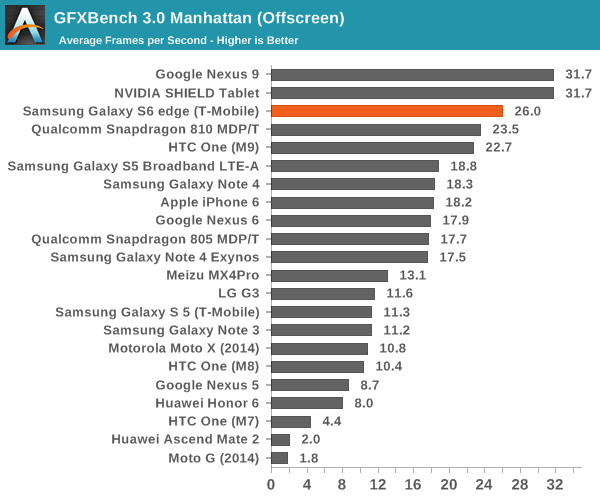
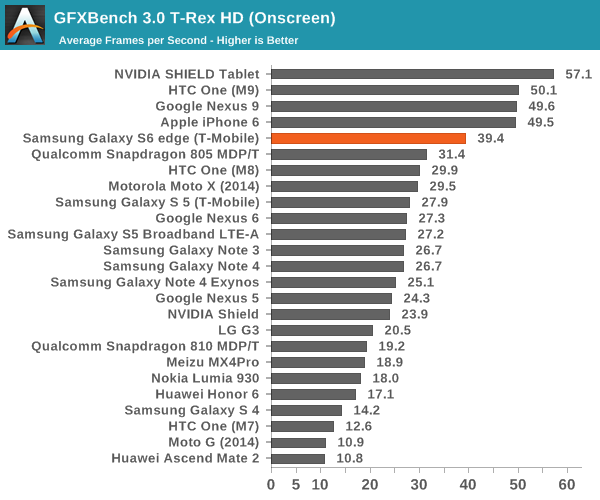
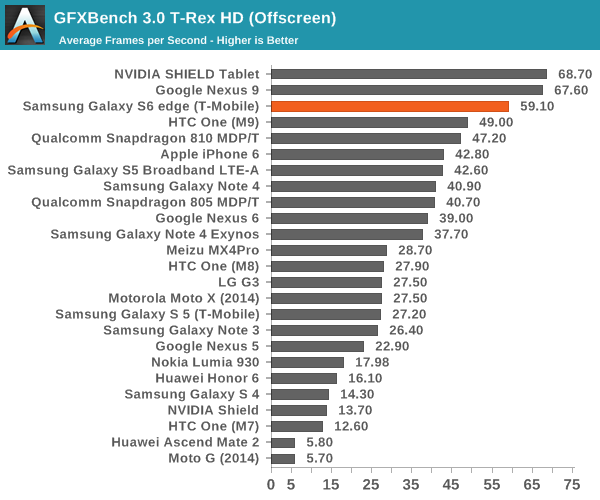
From the results the Mali T760MP8 GPU of the Exynos 7420 performs admirably in comparison to the Adreno 430 of the Snapdragon 810. We see a 10% lead over the Adreno 430 in Manhattan, growing to 20% in T-Rex. Qualcomm hinted that the Adreno 430 is more strongly improved in ALU performance over the Adreno 420, which would explain why the gap isn't as significant this generation. A 700 MHz clock on the Adreno 430 would likely equal to T760 in this case, but I suspect the power consumption of such a clock would be untenable. The Galaxy S6 does fall behind on the on-screen benchmarks due to the 1440p display compared to the 1080p display of the One M9, but rendering at a lower resolution would avoid most of these problems in real games.
Display
As previously discussed, the Galaxy S6 line introduces a newer generation of AMOLED displays, which is said to increase maximum luminance to 600 nits. Samsung claims that this was achieved with the use of new materials, which is likely necessary in order to sustain power efficiency improvements. It doesn't seem that AMOLED is uniquely suited to high resolution, but rather that Samsung Display Corp. is managing to dramatically improve how they make AMOLED displays with every year that offset power consumption increases from higher resolution displays. To find out how Samsung did, we use SpectraCal's CalMAN 5 Ultimate, in addition to X-Rite's i1Pro2 Basic to characterize displays as accurately as possible.
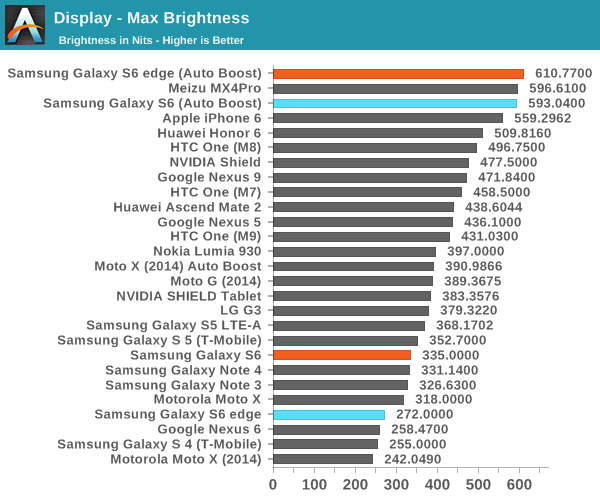
From the results Samsung's claims of a 600 nit display are valid in this case, which is a 100% APL white display. It's important to note that achieving this requires the use of auto-brightness, and that manual brightness is limited to a much lower brightness to reduce power usage, here the S6 sees similar maximum brightness as the S5. The S6 edge disappointingly only achieves 272 nits in this mode, a rather low value. I saw color balance shift dramatically in auto-boost mode, which suggests that this operating mode is likely less efficient than manual brightness. As an explanation, we've seen that colors are controlled in AMOLED by voltage while brightness is controlled by PWM (pulse width modulation). As with most recent AMOLED displays, there's no DC bias to the pixels so the contrast really is infinite instead of just a very large number when displaying black.
Galaxy S6
Galaxy S6 edge
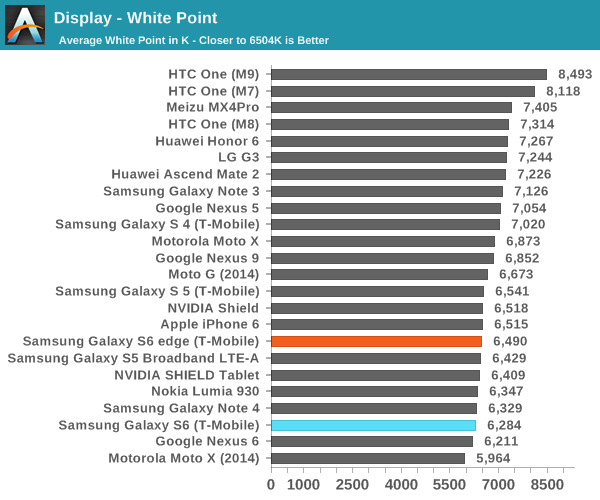
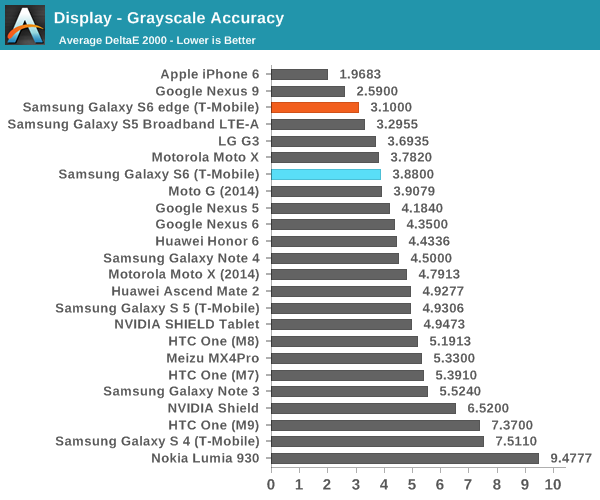
Moving on to grayscale, we can see that Samsung has done a pretty good job of controlling the white point and gamma across the saturation sweep, even if green is slightly dominant in both displays. We can also see that there is variation across displays as the S6 edge is closer to neutral while the S6 sample tends a bit warmer.
Galaxy S6
Galaxy S6 Edge
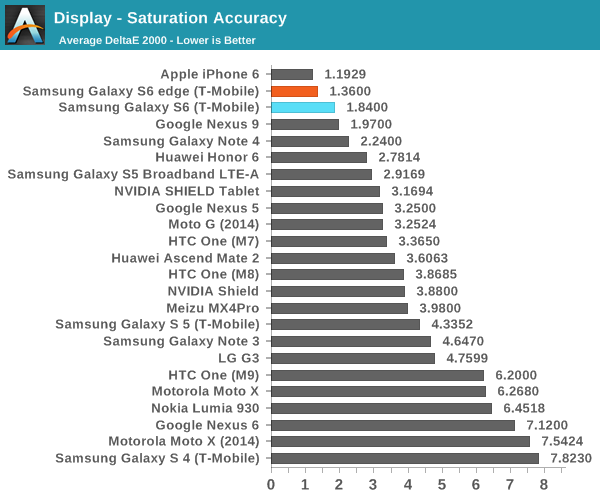
In the saturation sweep, both displays do an incredible job. I really don't have anything else to say here, because there's really no way to improve on the level of calibration Samsung has done on this display. Unless Samsung calibrates every single display in production, which is wildly impractical and effectively impossible to do, this is as good as it gets for a mass-produced device. Improving past this point will also be incredibly difficult to perceive, which means there's no real reason to go any further.
Galaxy S6
Galaxy S6 edge
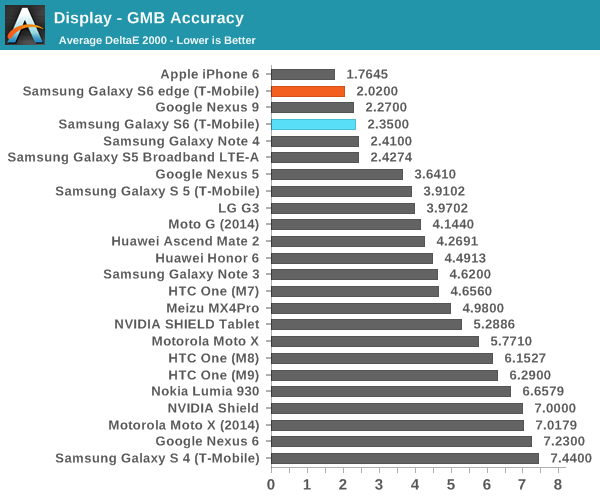
In the Gretag MacBeth ColorChecker, we can get an idea for overall color accuracy, which paints a picture similar to the saturation test. The only real problem I've noticed with these displays are the viewing angles, which can produce color shifting when the display is tilted. This is a bit of an issue on the edge variant as I can see that the edges of the display appear somewhat green when viewed head on, but otherwise there are no real issues to be seen here. Overall, this is probably the best display anyone will be able to get in a smartphone right now. This level of progress is amazing from Samsung, given just how bad things were with the Galaxy S' AMOLED display, even as recent as the display of the Galaxy S4. With the Galaxy S5 review, I said that I wouldn't be surprised to see AMOLED equal, if not exceed LCD within a year or two, and Samsung has managed to finally hit that mark.



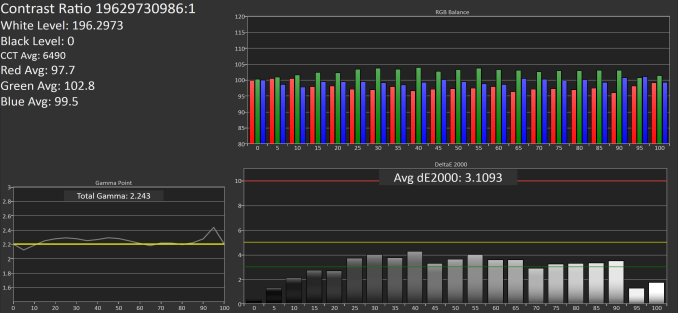
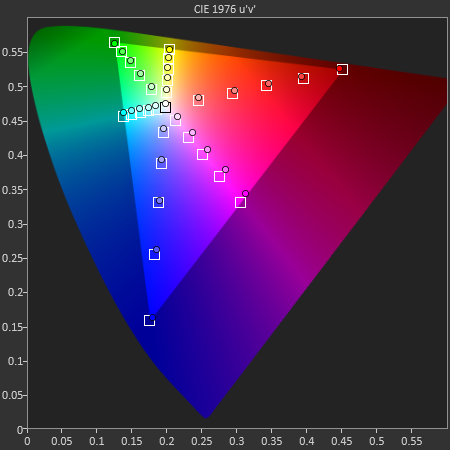
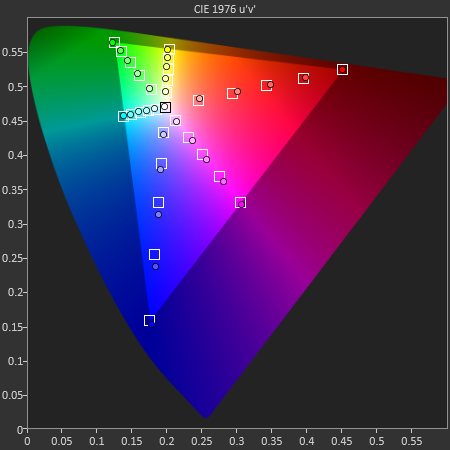
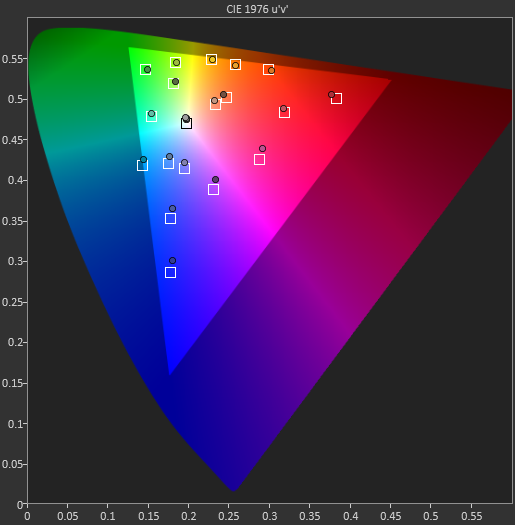









200 Comments
View All Comments
Darkito - Thursday, March 26, 2015 - link
I should say I have an almost four year old SGSII and I still get a full day's charge now that I've gotten rid of wakelocks.steven75 - Friday, March 27, 2015 - link
So all he needs to do is basically root his phone and fix it himself. That sounds like a great experience worth paying a premium for! /skhha4113 - Thursday, March 26, 2015 - link
Your wife's S4 lasts for only 3hrs? Either the battery is bad or something wrong with the phone. My wife's can go almost a day (10hrs) for the same as yours (almost 2 tears).robertkoa - Thursday, March 26, 2015 - link
I think the biggest advantages are Touchwiz will have much less lag and the Camera is on par and in some ways superior to Note 4 ( low light only and manual control) with same sensor.I have heard ( unconfirmed) that Battery is Tech Replaceable and I agree that degradation after 200 to 500 charges is a concern.
I am surprised that Benchmarks are not higher though not a big concern to me.
Samsung COULD have made these 1 millimeter thicker and had about 25% more battery capacity!
Do you really need it this thin ?
I need the Camera but hope for a Note 5 Compact with about 4.7" or 4.8" screen and about 8mm thick strictly business same features Camera and price as Note 5 for pocket power.
Still the S6 is functional stylish , speedy and fluid despite Benchmarks here- amazed that Iphone6 smokes it mostly...don't care too much but those Apple Guys know their stuff.
The Hype was S6 was going to beat eveything by a mile...what happened ?
danbi - Saturday, March 28, 2015 - link
Of course, Samsung could have installed a bigger battery. But this could have resulted in:- more heavy device;
- thicker device;
- slower charge;
- need for more durable charge/discharge circuitry (cost);
- more expensive;
Samsung competes for each of those parameters with others. We don't know their design goals, but likely these are "make a device that has comparable feel in the hand to the iPhone" -- so it can't be much more thicker and heavier.. Things like that.
Do not worry. Samsung makes a plethoria of mobile devices. They will also make a thicker and with larger battery device. It will just not be the Galaxy S6.
Perhaps a solution is an "built to order" model.. who knows.
jospoortvliet - Sunday, March 29, 2015 - link
Add one item to that list:- thicker than the iPhone 6
it is the only reason that counts. The 10 grams and 1 mm extra a larger battery would take would not bother any user...
Walkop - Sunday, March 29, 2015 - link
Don't forget that higher resolution does NOT necessarily mean worse display power consumption with AMOLED. You don't need a more powerful backlight to punch through the pixels because the pixels ARE the backlight. Much more suited to high-density panels than LCD.DaBruinz - Wednesday, April 1, 2015 - link
Displaymate measured this display at 20% better than the S5 and 23% better than the iPhone. SAMOLD is very efficient and hey seem to be improving it constantly.1805 - Wednesday, April 1, 2015 - link
I wouldn't worry about battery lifehttp://www.phonearena.com/news/Our-Samsung-Galaxy-...
SmartPhones Watch - Thursday, April 9, 2015 - link
The battery seems not to be much good in S6 Edge and using of an secondary external battery has been avoided due to the non-removable battery in S6 Edge :( Samsung will have to really put more work on their battery efficiencyhttp://smartphoneswatch.com/samsung-galaxy-s6-edge...